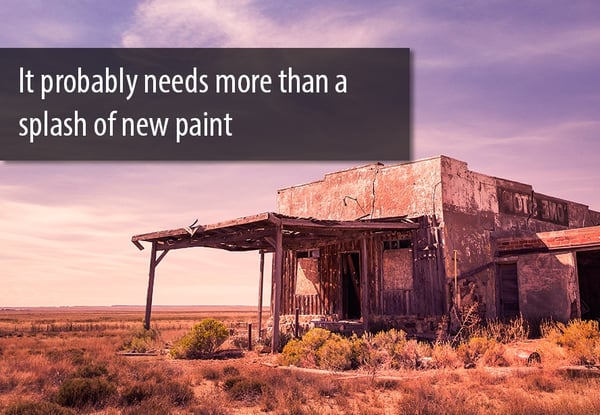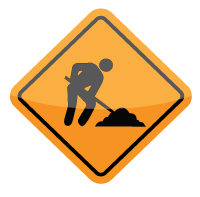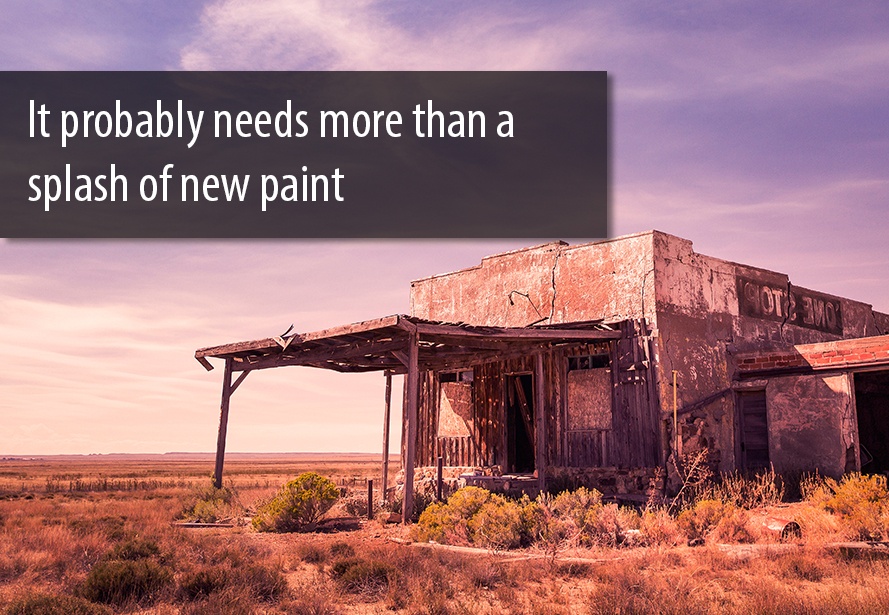5 Signs Your Website Needs Remodeling

When it comes your website, the old adage of "if it ain't broke, don't fix it" should not be applied. Having a dated website may be damaging your brand as a builder and costing you jobs.
Savvy homeowners and potential clients are turning to the internet to research and learn about new building options. Actually, 86% of consumers stated that using a search engine allowed them to learn something new or important. With all of the advances and innovative construction techniques in the building industry today, is your website working hard enough to engage visitors and generate leads for your business?
5 signs your website needs remodeling
1. Your content is stale
 When was the last time you really read the content on your website? Just don't glance at your site, really dig into the message that comes across. Maybe your services have even changed a bit since the last update. Use this opportunity to craft a targeted message based on keyword research for your industry and ideal customers.
When was the last time you really read the content on your website? Just don't glance at your site, really dig into the message that comes across. Maybe your services have even changed a bit since the last update. Use this opportunity to craft a targeted message based on keyword research for your industry and ideal customers.
Another way to remodel content is to update your blog. Perhaps the frequency and quality of your posts has waned. Prior to writing new posts, take the time to create an editorial calendar to maximize your efforts. Once you have a plan in place, generate a list of topics that address what prospective customers may be searching for online. A great way to do this is by asking members of your team to list the common questions they hear from clients and prospects on a regular basis. Use these questions to create blog topics moving forward.
2. Your site looks bad on a smartphone or a tablet
 Pull up your website on a smartphone or a tablet. What do you notice? Is the text too small? Do you find yourself "pinching" and "tapping" at the screen to enlarge the text and navigate through the site? Do images of homes appear squished or distorted?
Pull up your website on a smartphone or a tablet. What do you notice? Is the text too small? Do you find yourself "pinching" and "tapping" at the screen to enlarge the text and navigate through the site? Do images of homes appear squished or distorted?
This means your website is not optimized for mobile devices. Responsive websites automatically format text and images to look good on any device. Navigation becomes optimized as well. Considering that 80% of internet users own a smartphone, how long to you think they'll stick around a website that doesn't work well while browsing on their phone?
3. Your competition is ranking ahead of you on search engines
 If other builders are at the top of the list while searching for your services online, it's time to take measures to move up in the rankings. Keep in mind that 60% of all organic clicks go to the top 3 search results. Refreshing the content and having a responsive website will definitely help, but there are additional search engine optimization (SEO) tactics to consider.
If other builders are at the top of the list while searching for your services online, it's time to take measures to move up in the rankings. Keep in mind that 60% of all organic clicks go to the top 3 search results. Refreshing the content and having a responsive website will definitely help, but there are additional search engine optimization (SEO) tactics to consider.
- Check to make sure all of the images on your site have alt-text descriptions.
- Identify and use keywords and phrases that are relevant to the building industry.
- Expand your FAQ page to build more internal links to other pages on your site, such as your blog.
More information on SEO best practices can be found here.
4. There's nothing for visitors to do -- so they leave
 Is your site a glorified brochure? It may look nice and provide some excellent information about your business, but do you offer any educational content for people to interact with? Have you given them options to watch a video, download an informational ebook to read later, or flip through a slideshare portfolio of completed projects? Websites have evolved into reservoirs of helpful information. Visitors will stick around your website longer (and return more often) if it contains different ways for them to consume information, and learn.
Is your site a glorified brochure? It may look nice and provide some excellent information about your business, but do you offer any educational content for people to interact with? Have you given them options to watch a video, download an informational ebook to read later, or flip through a slideshare portfolio of completed projects? Websites have evolved into reservoirs of helpful information. Visitors will stick around your website longer (and return more often) if it contains different ways for them to consume information, and learn.
Other reasons why people are leaving your website may include:
- Irrelevant content
- Load time is slow
- Automatic pop-ups
- Poor navigation
5. You're not capturing visitors' contact information
 Driving more traffic to your site is great, but if you aren't converting any of those visitors into leads for your business, what's the point? Beyond establishing your business as an authority in the building industry, your site should be helping the bottom line. To get started generating leads from your website, make sure you have a form for prospective customers to enter their information for a consultation. Forms may be embedded directly on your main pages, say on a sidebar, or be housed on a dedicated landing page for a particular offer.
Driving more traffic to your site is great, but if you aren't converting any of those visitors into leads for your business, what's the point? Beyond establishing your business as an authority in the building industry, your site should be helping the bottom line. To get started generating leads from your website, make sure you have a form for prospective customers to enter their information for a consultation. Forms may be embedded directly on your main pages, say on a sidebar, or be housed on a dedicated landing page for a particular offer.
Still need some help with determining what is working and what needs help with your website? Sign up for a free website analysis.

